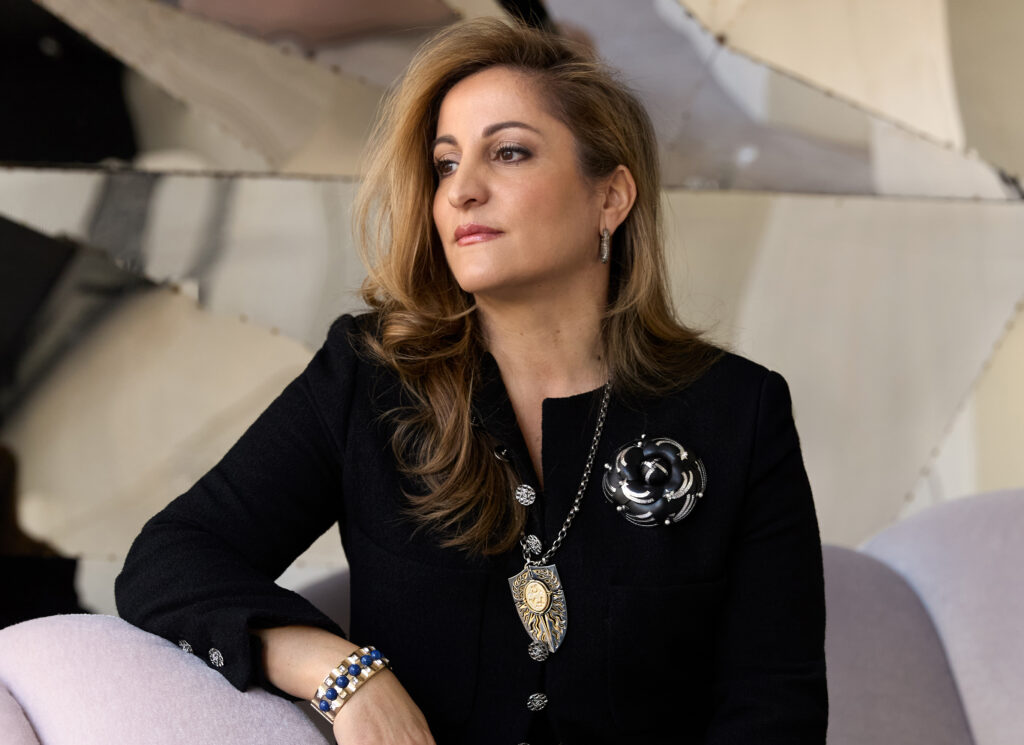Poetic, passionate, and perceptive: these words effortlessly capture the spirit of Aline Asmar d’Amman.
Born in Lebanon and Parisian by sensibility, Aline is the architect and interior designer behind Culture in Architecture, a studio that calls both Paris and Beirut home. Known for her deeply narrative approach to design, Aline doesn’t just create captivating spaces, she crafts immersive worlds where cultural heritage and contemporary elegance meet.
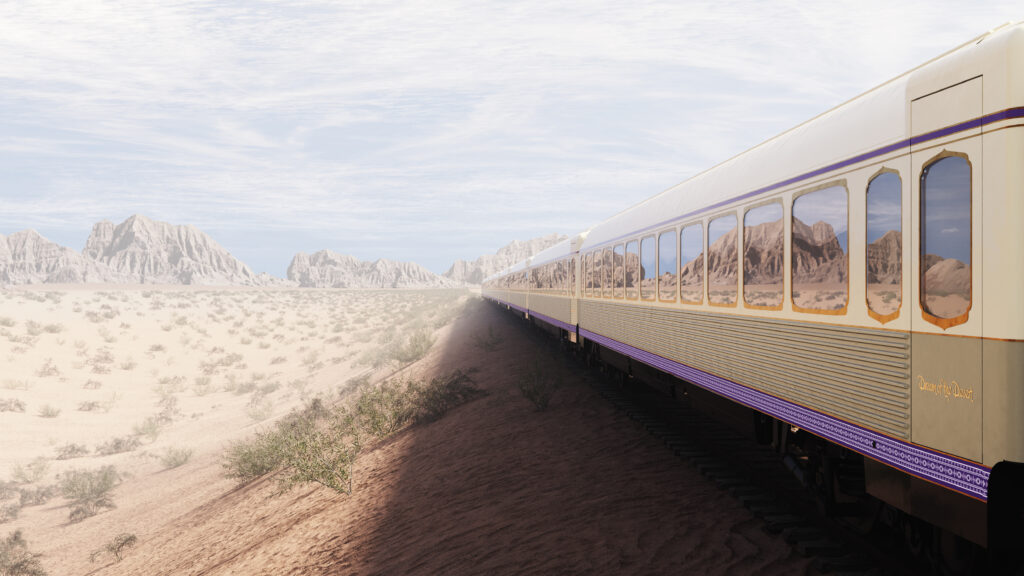
Her latest chapter unfolds aboard Dream of the Desert, Saudi Arabia’s first five-star luxury train. Set to begin its journey in 2026, the train is the result of a collaboration between Saudi Arabia Railways (SAR) and Italian luxury hospitality group Arsenale. At the heart of its interiors is Aline’s creative vision, an evocative tribute to the Arabian landscape and traditions elevated with refined craftsmanship and modern sophistication.
What makes Aline’s work extraordinary is her ability to bridge seemingly distant realms: the raw and the refined, the historical and the modern haute charm. Her past and ongoing projects — spanning the restoration of the Hôtel de Crillon in Paris, the reinvention of the Eiffel Tower’s gastronomic restaurant Le Jules Verne, and the transformation of Venice’s Palazzo Donà Giovannelli into the future Orient-Express Hotel — stand as testaments to her remarkable ability to tell stories through design.
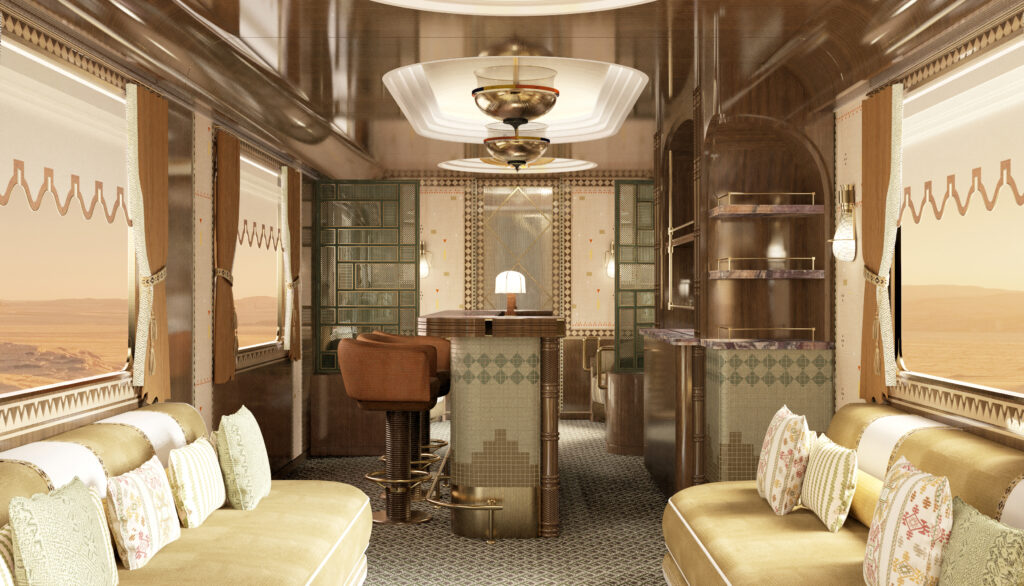
With Dream of the Desert, Aline reimagines train travel as a rolling retreat. Expect layered textures, sculpted spaces, and a visual language inspired by Saudi heritage sites. This isn’t just a journey through landscapes; it’s a voyage through places, memories, and traditions.
We sat down with Aline to talk about the design process and how she’s transforming the vintage Italian train carriages into a five-star destination on rails. Let’s step aboard and get to know the woman behind the dream.
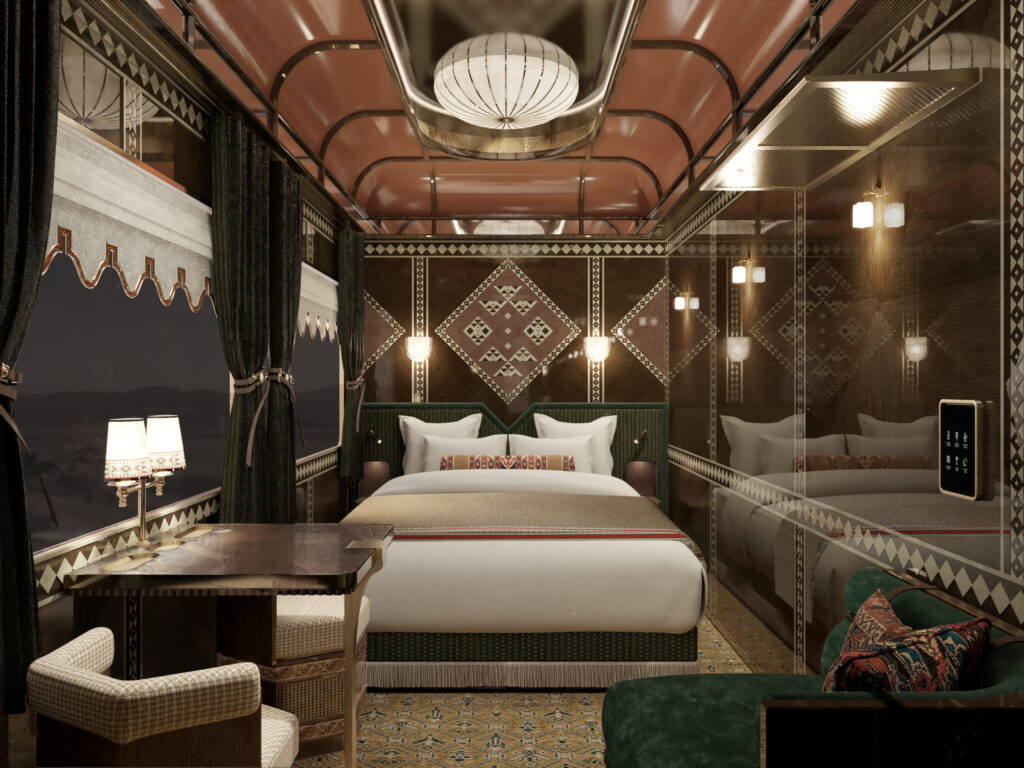
1. Dream of the Desert” transforms a moving train into a five-star destination. What was your first vision for this project?
My first vision for Dream of the Desert was more of a cinematic reverie, an immersive voyage that unfolds like a poem across the vast and mystical desert landscape.
This is how I approached the interiors: crafted details whisper traditional tales, told through the lens of refined modern interpretation. Dream of the Desert reflects centuries of Saudi elegance, embodying the art of travel and desert gatherings. More than a train, it is a journey in itself where creativity is anchored in cultural heritage, fine craftsmanship, and timeless design excellence.
2. You mentioned this is your first time designing a train interior. How did this challenge or expand your architectural language?
While this is my first time designing a train interior, the philosophy remains the same as with large-scale hospitality projects rooted in heritage buildings such as Palazzo Dona Giovannelli, the future Orient-Express Hotel in Venice, or Hôtel de Crillon, a Rosewood Hotel in Paris, on Place de la Concorde. The creative journey always begins with context and storytelling, guiding us toward unexpected yet fertile horizons. I like to believe that the greatest challenges lead to the most memorable projects. Dream of the Desert is not only about luxury hospitality on rails and the art of slow travel — it’s also a remarkable opportunity to pay homage to a culture rich with depth, beauty, and stories to share with the world.
3. Your design philosophy often bridges cultures while balancing the past and present. What past are you honoring in Dream of the Desert, and what future are you imagining?
My architectural work is rooted in the transmission of the past to the future, elevated by stories of cultural connections. For me, craftsmanship is the ultimate bridge between the past and present, a form of luxury passed down through generations, from one skilled hand to another. I spend hours studying the details of Saudi architecture — the intricate textile weavings, delicate wood carvings, and oil lamps that cast a cinematic glow — translating these elements through a refined contemporary lens, thoughtfully adapted to the unique spatial and technical constraints of a train.
The future I imagine is one of thoughtful modernity where innovation honors memory, and where cultural dialogue becomes the new definition of luxury.
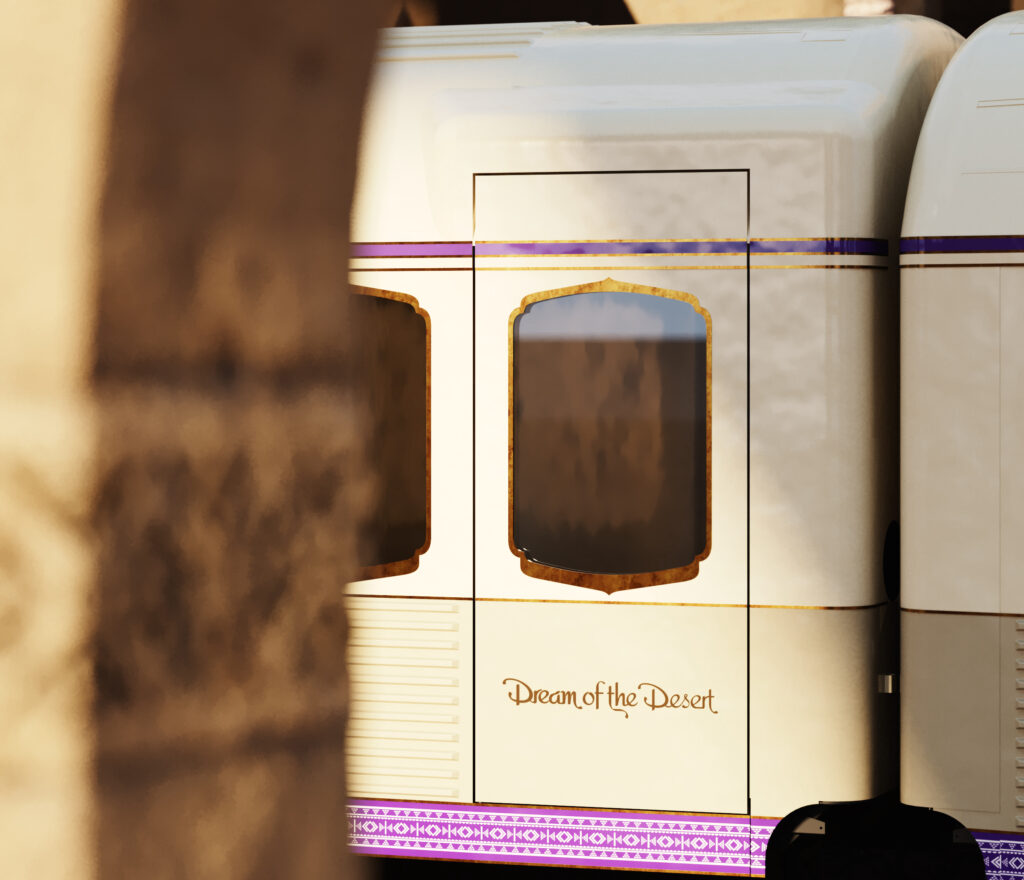
4. We understand that the train uses existing Italian wagons. How did you merge the concept of upcycling with design excellence? And what do you see as the future of ultra-luxury upcycling?
Upcycling is an art form in itself — an act of giving new life and meaning to existing structures. Working with Italian wagons, we re-envisioned their potential, layering them with Saudi soul and artisanal excellence. Rather than starting from scratch, we embraced the idea of reinvention, creating something that speaks to both history and sustainability. Luxury today isn’t about building from the ground up, it’s about transforming with intention.
The future of ultra-luxury lies in this philosophy: reimagining existing elements in an elevated, sustainable way. In Dream of the Desert, the blend of Italian craftsmanship and Saudi artistry, combined with collaboration with Arsenale and the Saudi Ministry of Culture, exemplifies this cross-cultural dialogue. This project is an ode to the magic of cultural exchange and the endless inspiration drawn from both the heritage of Saudi Arabia and the vast, poetic desert landscape.

5. You’ve spoken of slow travel as a rare luxury that invites us to be fully present. How did you bring this philosophy to life through materials, textures, and space?
Slow travel is about surrendering to the moment. I translated that into a tactile and visual language: velvety textiles that invite touch, warm woods that recall traditional dwellings, sculptural lighting that creates intimacy.
The desert’s palette — earthy tones, sand, lavender, and oasis green — infuses each space with a grounded serenity. From the reception lounge to the restaurant, the interiors become a continuous meditation on presence and place.
6. Each suite on Dream of the Desert offers a unique lifestyle experience. What emotional journey did you want passengers to feel as they move through the train from reception to restaurant?
Design is a powerful means of storytelling, a vessel for humanistic values elevated by artistry and craftsmanship. I believe architects write with materials as authors and poets do with words, and this material poetry is a motto in my work. I’m not interested in recreating a piece of pastiche but rather in re-interpreting tradition in a way that is modern and respectful. Only by embracing the cultural essence and authenticity can we achieve timeless elegance and create inspiring journeys. I envisioned the train as a passage not only through landscapes but through layers of emotion.
From the welcoming majlis-inspired lounge to the contemplative suites and refined restaurant, each space is a different chapter of the same poetic journey deeply rooted in the kingdom’s rich heritage. I wanted passengers to feel a sense of belonging, of suspended time where comfort, beauty, and culture come together in a sensorial crescendo.
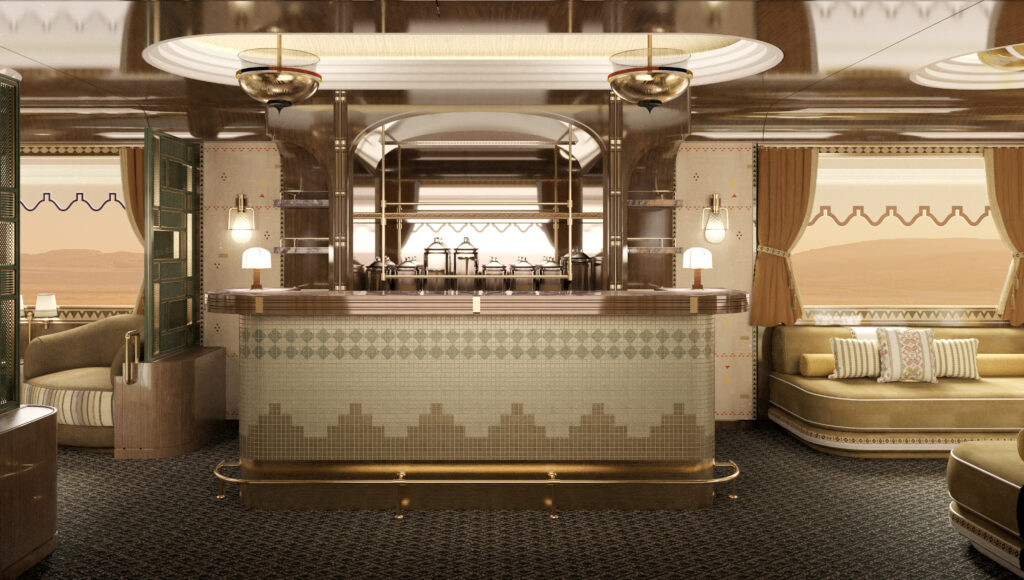
7. What was the most unexpected design decision you made during this project, something that even surprised you?
I loved discovering the profound symbolism behind the color purple, which has been adopted as Saudi Arabia’s royal color since 2021. Inspired by the lavender flowers that bloom across the Saudi deserts in spring (especially in the Asir region), this lavender hue is also found in the renowned “Roses of Taif.” It blooms in the most unexpected and truly magnificent ways.
I’ve become obsessed with the beauty of this story and have been paying tribute to the beauty of this wildflower through refined, noble details such as delicate purple thread stitching on camel-tinted leather, or the use of amethyst stone for table lamps. I found myself imagining unprecedented ways to elevate the presence of this color, including showcasing photographs of these flower fields in the corridors as a symbol of rare beauty, nobility, and a deep connection to the Saudi natural landscape.

8. The train is part of Saudi Vision 2030. What do you hope this project tells the world about Saudi Arabia and its future of tourism?
Saudi Arabia is witnessing an extraordinary transformation, inviting the world to discover its rich cultural tapestry and traditions while embracing art and creativity in the most forward-thinking ways. With a dynamic calendar of cultural events, the Kingdom is crafting a new narrative — one that I am honored to be part of. Dream of the Desert embodies this vision, rooted in deep respect for heritage while seamlessly embracing modernity.
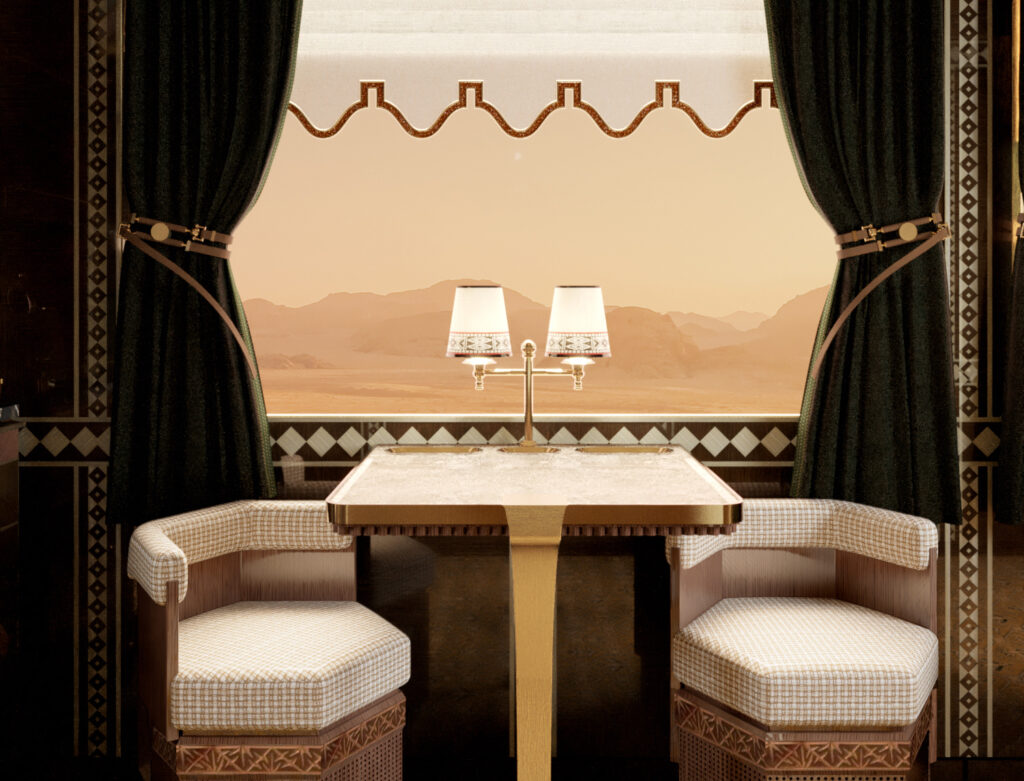
9. Your design aesthetic is both poetic and powerful. If Dream of the Desert were a poem or a piece of music, what would it be?
I love blending art, poetry, and music as fuel for design inspiration. If Dream of the Desert were a poem, it would echo the exquisite words of Etel Adnan. Her delicate yet profound verses reflecting the naïve, sublime colors of her paintings, the same shades embraced by desert sands and sunsets. Her words, coupled with Fayrouz’s glorious voice singing Rajeen Ya Hawa, would transport me to another realm as if already aboard Dream of the Desert!
Etel Adnan wrote:
We walked many nights through
beds of flowers
telling each other that mountains move secretly,
stars betray their order,
rivers and flowers
are women in love.
To learn more about Aline Asmar d’Amman, click here.
Images courtesy of Aline Asmar d’Amman / Culture in Architecture
